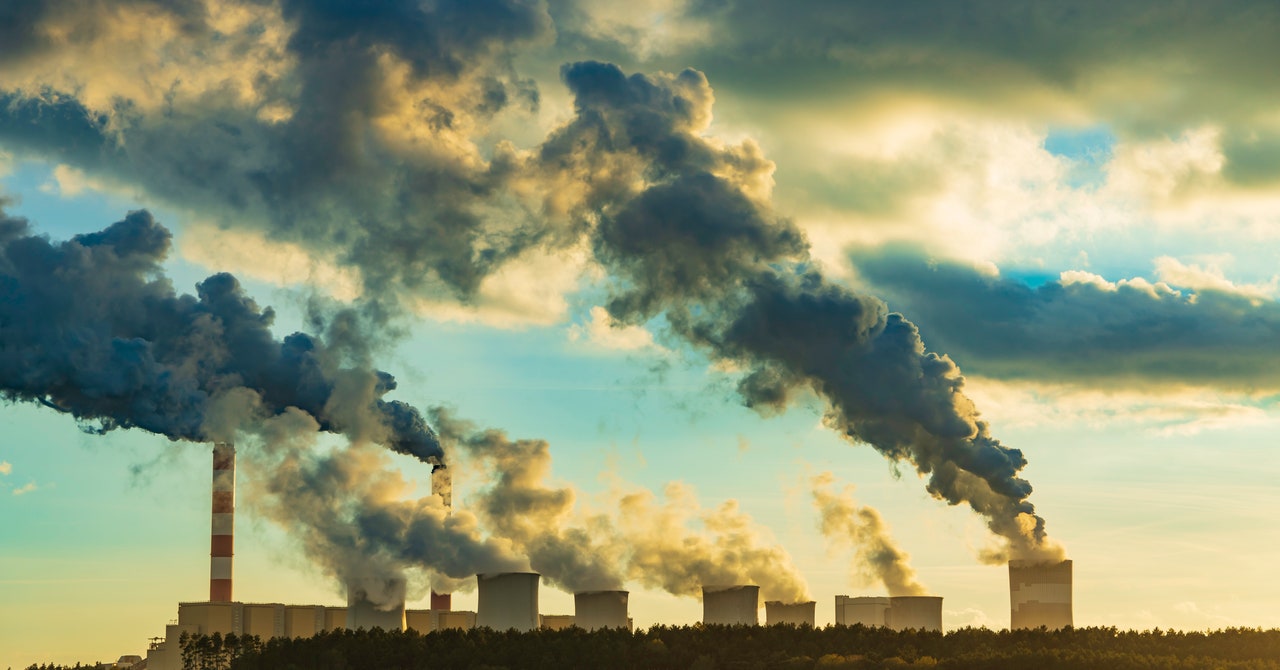Basically… A lot! Just to have what effectively amounts to a painkiller. Now don’t get me wrong, those are great but you know what’s better? Solving the issue that causes you pain to begin with.
Hmm …what about continuing to go on benders every night and not addressing the problem at all? Would that be bad?
I know something better and it’s solar powered: Trees!
Trees are great for other reasons, but they grow far too slow to capture significant carbon. The fastest natural carbon sinks are algae.
I say, we damn up all of the arctic circle, propagate Azolla there, kill it off and sink it every season. Nature did it once! We can do it again!
But think of all the space that would take! If you replant forests where are we going to put our superhighways and parking lots?
At this point, we need to do both
Sounds like a great use for nuclear and then if there’s a drop in renewable energy it can pick up the slack
None. They are called trees. We should stop wrecking things.
To be fair trees still use energy for doing this, but that energy is conveniently provided by the sun.
If humans could make a profit off of killing the sun, they would.
We should try with solar farms
How does that destroy the sun? Unless I have the wrong idea of what a solar farm is. I’m imagining a big ol’ flat farmland in the middle of kansas with thousands of solar panels.
By stealing its photons!
(it’s a joke)
Dyson swarm goes brrrt.
I know it’s not killing the sun, but we’d be hogging up all that sunlight from other planets in the solar system.
Eh, the only other places in the solar system that could have life get the heat from tidal forces. I don’t think they will miss a bit of solar energy.
“Since the beginning of time, man has yearned to destroy the sun.” - Mr. Burns
Algae does it for free all the time. Physically trying to capture carbon dioxide is dumbassery. We need more investment in algae production.
It could be beneficial for densely populated areas, though. Because you have predictable airflow and low-hanging regions to implement physical capture and sequestering. We can do more than one thing at a time and targeted approaches combined with generalized approaches will yield faster results.
In order for that we need more renewable energy, otherwise we’re just burning fossil fuel, producing carbon dioxide, and then capturing it. Solar, wind, algae biofuel, renewable diesel, green hydrogen, etc. We have to be careful how we use energy otherwise we’re just producing carbon dioxide to capture carbon dioxide.
People keep complaining that solar and wind give us “too much electricity at the wrong time”, causing power prices to go negative (as if this is a problem). Having a beneficial process like co2 removal that you can do at any time of day (the co2 isn’t going anywhere) that would soak up all that energy seems like a win win.
Yea, and one of the best ways to sequester carbon dioxide is by using algae. Algae biofuels are a great way out of the climate crisis. Use excess energy to produce algae biofuel, net negative emissions.
But if it’s used as fuel, wouldn’t that typically return the CO2? Just about all fuels are burned, which creates the CO2, and you have to make sure the energy you use to make and transport the fuel is clean, too.
Yes, but overall it would be net negative carbon dioxide emissions.
How does it stay net negative? Carbon goes into the fuel, which is good, but doesn’t like all of it come back out when burned for fuel? My understanding is that these fuels can only really achieve neutrality, and that assumes clean energy used to make the fuel.
Looks at US corn production for ethanol 👀
Yea that’s an example of greenwashing.
deleted by creator
Algae doesn’t capture it for long. Trees do it for longer but not long enough to be more then a speed bump. Unless we start dumping algae and trees into giant pits and sealing them up three is no long term carbon capture.
Biochar (created in a retort) is how you sustainably sequester carbon for the long-term using trees (and similar biomass).
Good point. I’m curious how the total amount of energy and resources utilized to grow, harvest, and char algae compares to direct CO2 removal. Ultimately, I just want something that works without generating another issue.
I think the key would be to not use any additional resources to grow, harvest, etc.
This could be done for example by landscaping companies that put their waste through a retort (which could be anything from a stove made of mud bricks, to a mobile trailer that does on-site pyrolysis and use the resulting biochar to fertilize their customer’s plants. Farms could put their waste through it, innoculate the biochar with animal waste, and use it as fertilizer.
I make biochar from my backyard waste in my firepit using a can like this guy.
Any other method of carbon capture I’ve ever heard about makes no sense. Having hundreds of engineers and workers drive to work for years to engineer and build giant metal and plastic factory/machines with parking lots that require staff that has to drive and park there, etc is nonsense. And even if they work, what would they do with the carbon? Biochar provides a cycle that is accessible to everyone, can be done on-site, uses no fancy technology, nothing is patented, and doesn’t require all this nonsense.
Here is an alternative Piped link(s):
https://www.piped.video/watch?v=9boXHuzMFsA
https://www.piped.video/watch?v=ChVxPpnPT-I
Piped is a privacy-respecting open-source alternative frontend to YouTube.
I’m open-source; check me out at GitHub.
deleted by creator
Algae doesn’t capture it for long.
Not true, it depends on how it’s contained. Drying algae and removing the water will stop it from decomposing. Think of seaweed used for sushi except ground up into a very dense powder. Algae will decompose if left hydrated in the sun though.
Where you getting the energy to capture and dry algae that results in a total positive capture?
Solar, wind, nuclear, green hydrogen, hydro, geothermal.
Techbros were pitching how we’d invent self replicating carbon capture nano machines in the future
That’s so annoying about motorsports in recent years. Commentators are tasked by the race series owners to hype up that BS. Researching the technology is fine. Scientists may find ways to capture carbon at a better rate at acceptable energy cost but shouting that an inefficient combustion engine is somehow better for the environment than EV because “batteries bad, carbon capture great” is just stupid.
If we wanted to remove enough CO2 to get back to the preindustrial level of 280 ppm, it would take 2.39 x 10^20 joules of energy. For a reality check, that’s almost as much as the world’s total annual energy consumption (5.8 x 10^21 joules every year).
Isn’t that over an order of magnitude difference? What am I missing? How is that “almost as much”?
Yep, it’s close to 4% of the total. Not really “almost as much”.
That’s honestly pretty good, I can see world leaders coming together and just doing that. There must be other technical challenges to this other than raw power usage
I don’t know much about the technology, so I can’t comment on that. But I don’t really see politicians pushing for this, at least not succesfully. There are too many rightwing obstructionists in most Western governments right now…
Other than the currently dying Tory party (and even sort of them), every single major UK political party is for green energy and against climate change to varying degrees. And I mean on a policy level, not just words.
I’m not too familiar with other governments, but Europe seems to be going well on that front too. And as much as China bad, they seem open to green policies, and the US democrats seem pretty okay on climate, especially as carbon capture helps out fossil fuel companies.
I know that’s not a massive ringing endorsement, but considering the cost of 4% energy expenditure for a single year, it seems like a no brainer. If you spread it over 20 years that’s 0.2% of energy, less than AI or crypto uses by far
I’m guessing they don’t understand scientific notation, and “numbers are close” without understanding the numbers are much more significant
even if 10^20 was almost 10^21 (which is isn’t) 2.39 is not almost 5.8. It’s less than half!
Why do we listen to people who do not know what the fuck they are talking about? Have we lost our ability to know who is, and is not, completely full of shit?
This is why STEM education is important. You clearly learned from yours and that’s awesome!
The problem is that this is a theoretical minimum, not an actual, proposed process. We’d need a way to attract CO2 to separate it from the rest of the air, and afaik that doesn’t exist. Any actual process is likely to be far less than 100% efficient, probably an order of magnitude or more less.
This is an example of a real proposal, but I have no idea how efficient it is. It would be a lot more helpful if this article provided a realistic example instead of some back-of-the-napkin math.
Oh yeah, I agree it’s super inefficient currently. But if the theoretical 100% efficient process is 5% of our current yearly energy expenditure, that sounds promising and suggests we shouldn’t just write off the idea.
Exactly. I want to see some investment into CO2 removal. If that’s cheaper than retooling everything, we should do it. If it’s not, we should do a little bit of it to help remove the negatives of climate change as we transition to a more responsible society.
I say we tax carbon emissions at around the theoretical removal cost, and then use some of that to invest in removal tech.
We’d need a way to attract CO2 to separate it from the rest of the air, and afaik that doesn’t exist.
Call me crazy but what about plants and trees?! 🤷🏼♂️
They might not be 100% efficient but it’s dirt cheap to plant them, let alone not destroy the rest we still have
That’s important too, but it doesn’t scale very quickly, and requires a lot of space (read: lifestyle changes).
I didn’t read the article but it seems off. With only 1/20 of energy used by the world in a single year we could undo the damage of 300 years?
Seems too low. If that’s true we could shut down completely for just two weeks to undo
Can’t imagine “shutting down completely for just two weeks” would exactly be reasonable, but yeah I wonder if the article had a typo in it. I’m not sure. As of right now, the numbers are still the same in the article.
If the numbers are correct, expending like 5-10% of our energy expenditure for a single year on carbon capture sounds a lot more reasonable than the article suggests. Even if it were half of our yearly energy usage, that sounds pretty reasonable if you draw that out over a few decades.
That’s like 24x more….
Carbon capture makes much more sense directly on smokestacks and other industry waste outputs, but then how do businesses make taxpayers fund it?
Idk, I just feel like it’s 1. A cop out. We need to reduce emissions and not put our eggs in one basket. And 2. In its infancy. The tech isn’t efficient enough yet to be rolled out imo
I think we should pursue it for the future, but it shouldn’t be taking funding that could be used for more immediate solutions or used as a distraction / delay tactic (although of course it will).
I disagree. I think we should:
- Pilot it to prove the cost
- Charge a carbon tax based loosely on that number and (high) estimates for the amount of carbon emitted
- Return the carbon tax to the public as a credit
This keeps the tax revenue neutral (i.e. theoretically no hit to GDP) while encouraging companies to find cheaper ways to reduce carbon emissions or capture carbon to offset emissions.
If it’s ineffective at reducing emissions, then start spending a portion of it to remove carbon.
Preventing additional carbon emissions doesn’t decrease what’s already in the atmosphere. We would need some form of carbon capture even if we stopped all emissions today.
TL;DR: the total energy produced by humanity in a year.
Or if you want to do it in let’s say 20 years, 5% of the total power output.
That doesn’t sound too bad.
Technically yes, but politicians start freaking out as it would lower GDP a few percent too.
I think the technical term is: But muh ecomnomie!
They’re going to say that anyway when the real cost of warming hits. Calculation about that says GDP -30% to -50%. But that’s for the next legislature I guess.
Yes, for politicians the cost is always lower to kick the can into the next administration’s term. Unfortunately it becomes more and more expensive for the rest of us.
In the end, they’ll have kicked so many cans down the road that the huge pile is blocking the way.
It’s way less than that. 2.39x10^20 is around 4% of 5.8x10^21. Not even close to “almost as much”. Looks like the authors don’t know their powers of 10. So if we dedicate 5% of the total energy for one year it could theoretically be done.
Assuming a 100% efficient CO2 capture system…
Here’s an actual carbon capture system, I have mo idea how efficient or practical it is.
It depends on the method. IIRC, the most cost effective methods cost more than leaving it there. The real problem really is figuring out how to make a profit off it. Without the government forcing it subsidizing it, nobody will do it, even sustainably, in volume enough to matter.
That’s what the article theoretically exemplifies, avoiding emission in the first place is the best bet.
Targeting the preindustrial level of atmospheric CO2 is such an ambitious target, trying to undo 300 years of emissions. Then again, it’s not like we’ve stopped emitting.
If we instead try to calculate the energy requirements to simply offset the average emissions of that particular year, using this formula of 652 kJ/kg CO2, and average annual CO2 emissions, against the current numbers of about 37 billion tonnes, or 37,000,000,000,000 kg, we have 2.4 x 10^16 kJ, or 2.4 x 10^19 joules. Which converts to 6.7 x 10^12 kWh, or 6,700 TWh.
Total annual US electricity generation is about 4700 TWh per year.
Global electricity generation is about 25000 TWh per year, about 40% of which is from low or zero carbon sources.
So basically if we’ve got 6700 TWh of clean energy to spare, it would be more effective to steer that into replacing fossil fuels first, and then once we hit a point of diminishing returns there, explore the much less efficient options of direct capture for excess energy we can’t store or transport. Maybe we’ll get there in a decade or two, but for now it doesn’t make any sense.
Actually a thorough article from Wired. Oh…written by an Associate Professor, that’s why.
Casey Handmer seems to think there’s still an opportunity here. There are updated versions of that post, but I think this was his first on the topic.









